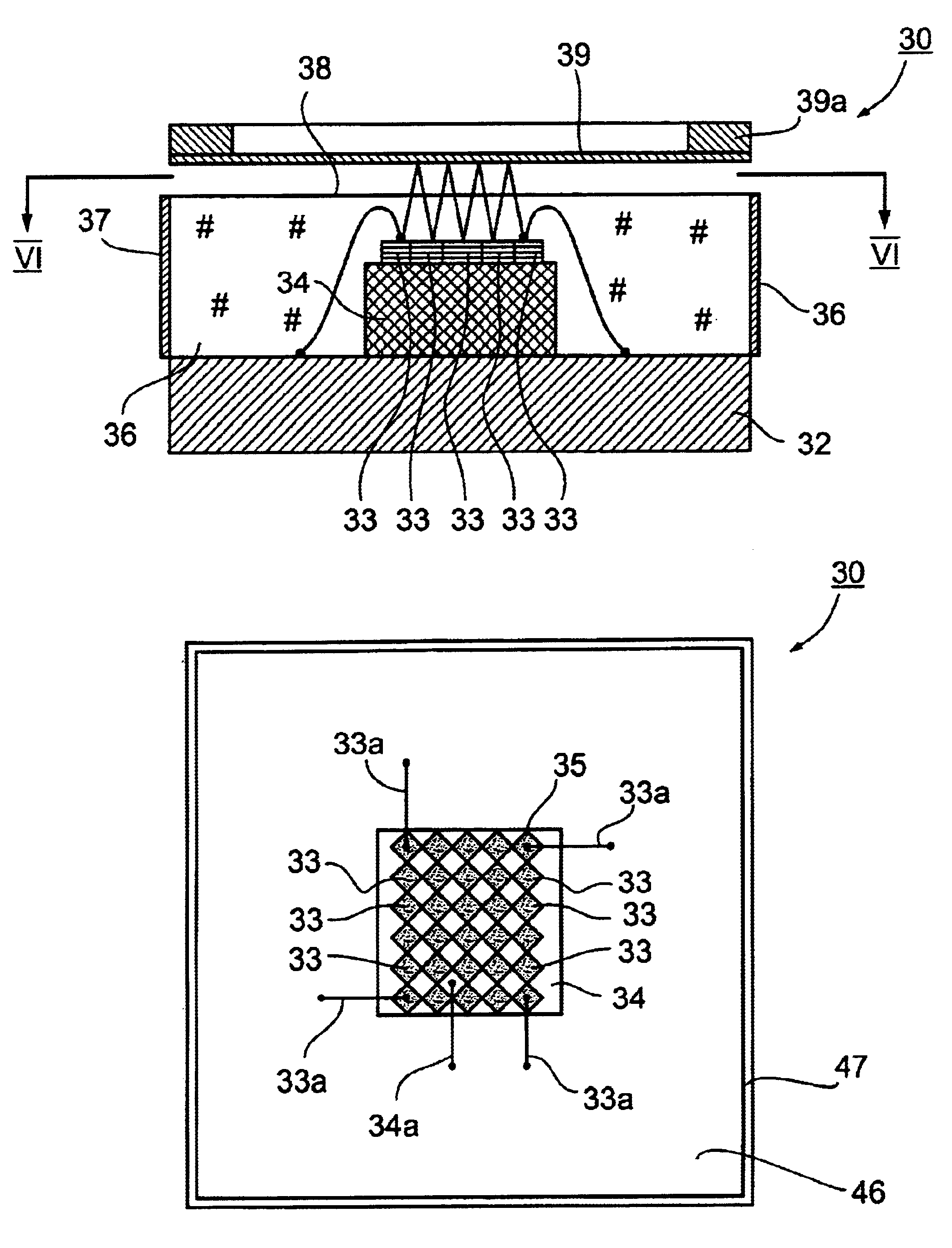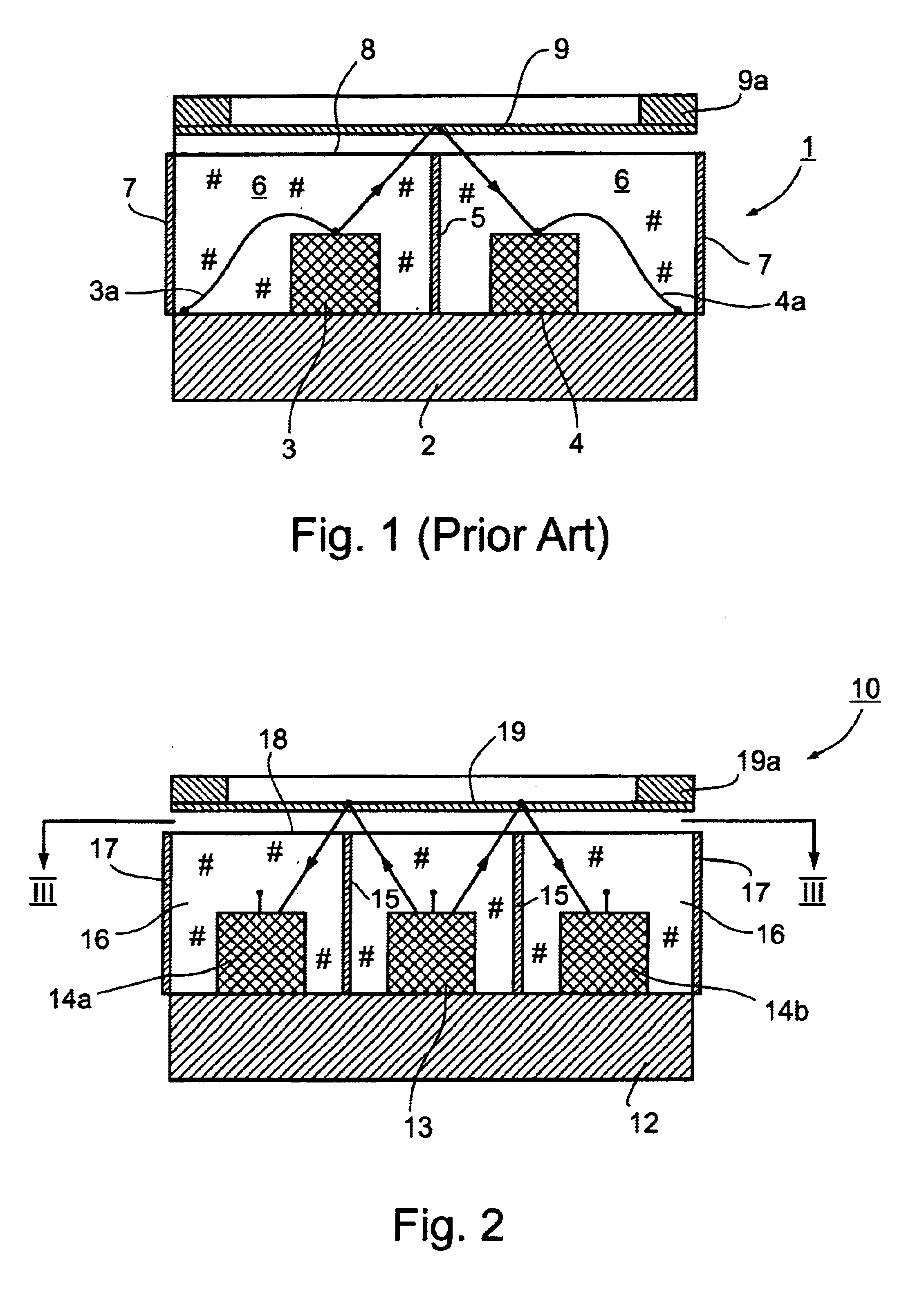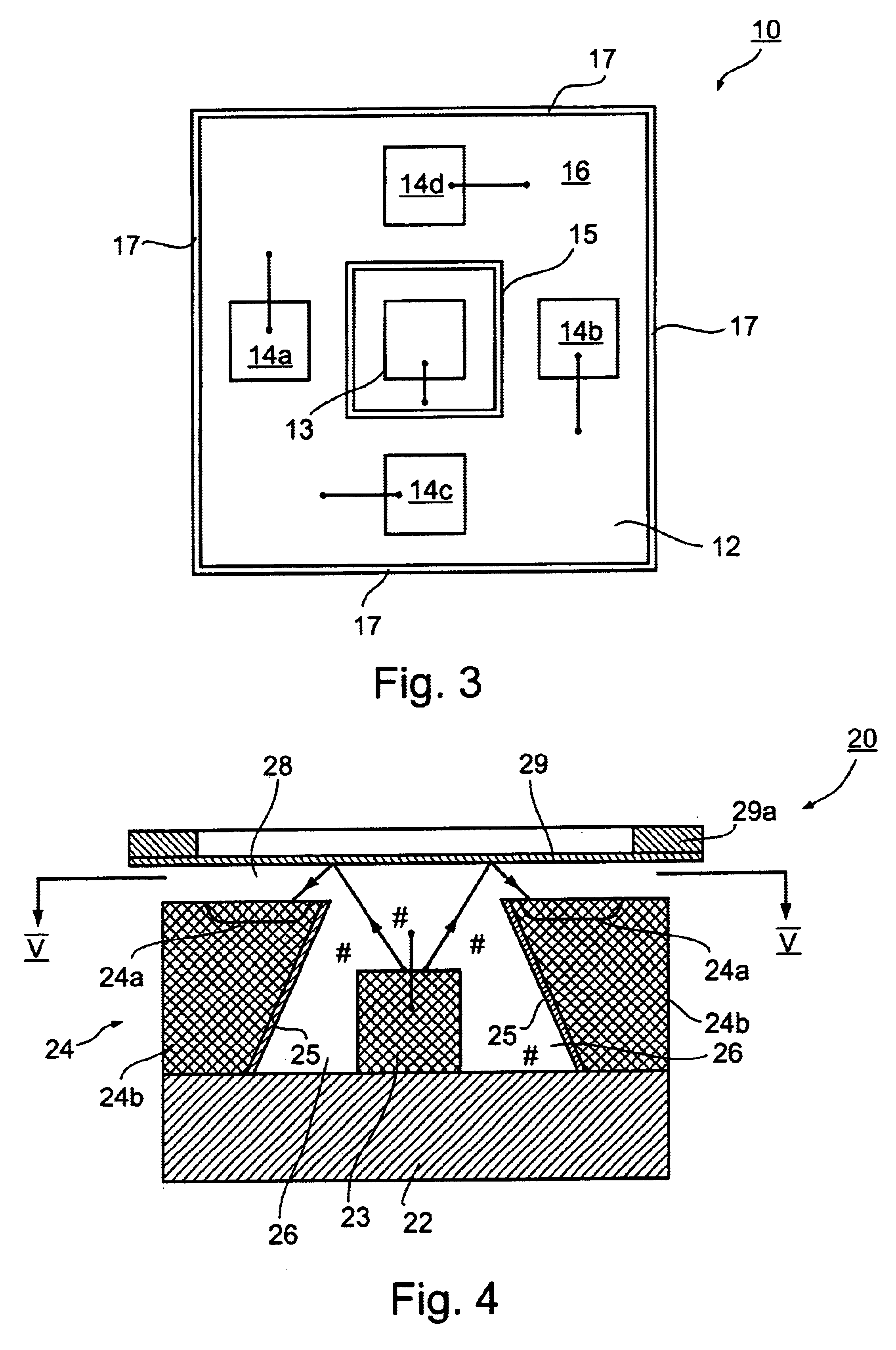Optical transducers of high sensitivity
a transducer and optical technology, applied in the field of optical transducers of high sensitivity, can solve the problems of relative low sensitivity and achieve the effect of increasing sensitivity
- Summary
- Abstract
- Description
- Claims
- Application Information
AI Technical Summary
Benefits of technology
Problems solved by technology
Method used
Image
Examples
Embodiment Construction
The optical transducer illustrated in FIGS. 2 and 3, and therein generally designated 10, includes a base member in the form of a printed circuit board (PCB) 12, carrying on one face a light source 13 and a light detector in the form of an array of four discrete light detector elements 14a-14d located on all four sides of the light source 13 so as to substantially surround the light source. The illustrated optical transducer further includes light shielding means in the form of a light-blocking layer 15 around the light source 13 such as to shield all the light detector elements 14a-14d from direct exposure to the light source 13. The light source 13, light detector elements 14a-14d, and light-blocking layer 15, are all embedded in a transparent plastic potting material 16. The outer surface of the transparent plastic potting material 16 includes a light-blocking layer 17 to block the exit of light from the light source 13 externally of the optical transducer, and also to block the ...
PUM
 Login to View More
Login to View More Abstract
Description
Claims
Application Information
 Login to View More
Login to View More - R&D
- Intellectual Property
- Life Sciences
- Materials
- Tech Scout
- Unparalleled Data Quality
- Higher Quality Content
- 60% Fewer Hallucinations
Browse by: Latest US Patents, China's latest patents, Technical Efficacy Thesaurus, Application Domain, Technology Topic, Popular Technical Reports.
© 2025 PatSnap. All rights reserved.Legal|Privacy policy|Modern Slavery Act Transparency Statement|Sitemap|About US| Contact US: help@patsnap.com



